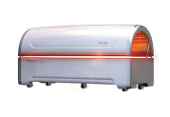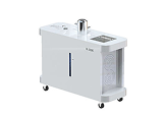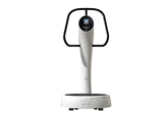Reference
Related Papers - Brain
Brain- Photobiomodulation Therapy: a Narrative Review
Photobiomodulation Therapy: a Narrative Review
What Did They Discover?
Research shows that photobiomodulation (PBM) can improve memory, mood, sleep, and alertness.
Patients with Alzheimer’s disease showed better cognitive function and higher cerebral blood flow.
People with traumatic brain injury reported fewer headaches and better sleep.
Those with depression improved after several sessions.
Even healthy volunteers showed better attention and short-term memory after 1064 nm light treatment.
How Does It Work?
The light is absorbed by an enzyme in mitochondria called cytochrome c oxidase.
This increases ATP (cell energy) and nitric oxide, which widens blood vessels and improves oxygen delivery.
It also reduces inflammation and protects neurons from damage.
Why Does It Matter?
PBM is non-invasive and safe, and it may help brain function without drugs.
It could become a useful option for people with neurological problems such as Alzheimer’s disease, depression, or brain injury.
However, more clinical trials are needed to confirm results and decide the best light dose and duration.
Key Mechanisms
Mechanism
Function
Wavelength range
600–1100 nm
Main target
Human studies (Salgado 2015; Vargas 2017) show higher middle-cerebral-artery velocity and enhanced EEG/BOLD signals.
Cytochrome c oxidase (mitochondria)
ATP ↑ CBF ↑ (20–30 %) Inflammation ↓ Cognition ↑
Conclusion
Brain photobiomodulation therapy helps brain cells make more energy, improves blood flow, and reduces inflammation.
Studies report better cognition, mood, and sleep in patients and healthy people.
It is a promising but still developing therapy that needs larger, well-controlled studies to confirm its long-term benefits.
Photobiomodulation Treatment Device
Hyperbaric Oxygen Chamber
Hydrogen Inhalation Machine
Nano-bubble Hydrogen
Water Generator
Whole Body Wave
Motion Exercise Device
Nitro Biome
BAHI Longevity
Product Background
References
Customer Center
Get In Touch
- Haan-ro, Gwangmyeong-si, Gyeonggi-do, Republic of Korea
- +82)2-898-2116
- info@huelight.kr
Copyright 2025 © Hue Light Co., Ltd. All rights reserved.
Disclaimer: The medical papers and academic information provided on this site are intended for educational purposes only and are not meant to
diagnose, treat, prevent diseases, or substitute for a doctor’s advice.
Photobiomodulation Treatment Device
Hyperbaric Oxygen Chamber
Hydrogen Inhalation Machine
Nano-bubble Hydrogen
Water Generator
Whole Body Wave
Motion Exercise Device
Nitro Biome
BAHI Longevity
Product Background
References
Customer Center
Get In Touch
- Haan-ro, Gwangmyeong-si, Gyeonggi-do, Republic of Korea
- +82)2-898-2116
- info@huelight.kr
Copyright 2025 © Hue Light Co., Ltd. All rights reserved.
Disclaimer: The medical papers and academic information provided on this site are intended for educational purposes only and are not meant to
diagnose, treat, prevent diseases, or substitute for a doctor’s advice.





